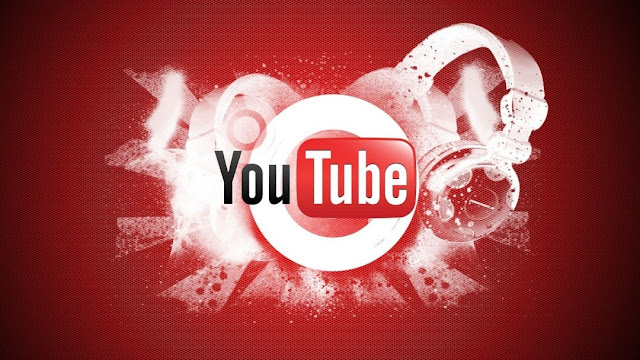 YouTube is an American video-sharing website headquartered in San Bruno, California, United States. The service was created by three former PayPal employees in February 2005. In November 2006, it was bought by Google for US$1.65 billion.[4] YouTube now operates as one of Google's subsidiaries.[5] The site allows users to upload, view, rate, share, add to favorites, report and comment on videos, and it makes use of WebM, H.264/MPEG-4 AVC, andAdobe Flash Video technology to display a wide variety of user-generated and corporate media videos. Available content includes video clips, TV show clips, music videos, short and documentary films, audio recordings, movie trailers and other content such as video blogging, short original videos, and educational videos.
YouTube is an American video-sharing website headquartered in San Bruno, California, United States. The service was created by three former PayPal employees in February 2005. In November 2006, it was bought by Google for US$1.65 billion.[4] YouTube now operates as one of Google's subsidiaries.[5] The site allows users to upload, view, rate, share, add to favorites, report and comment on videos, and it makes use of WebM, H.264/MPEG-4 AVC, andAdobe Flash Video technology to display a wide variety of user-generated and corporate media videos. Available content includes video clips, TV show clips, music videos, short and documentary films, audio recordings, movie trailers and other content such as video blogging, short original videos, and educational videos.
Most of the content on YouTube has been uploaded by individuals, but media corporations including CBS, the BBC,Vevo, Hulu, and other organizations offer some of their material via YouTube, as part of the YouTube partnership program.[6] Unregistered users can watch videos on the site, but registered users are permitted to upload an unlimited number of videos and add comments to videos. Videos deemed potentially offensive are available only to registered users affirming themselves to be at least 18 years old. In July 2016, the website was ranked as the second most popular site by Alexa Internet, a web traffic analysis company.[1]
YouTube earns advertising revenue from Google AdSense, a program which targets ads according to site content and audience. The vast majority of its videos are free to view, but there are exceptions, including subscription-based premium channels, film rentals, as well as YouTube Red, a subscription service offering ad-free access to the website and access to exclusive content made in partnership with existing users.
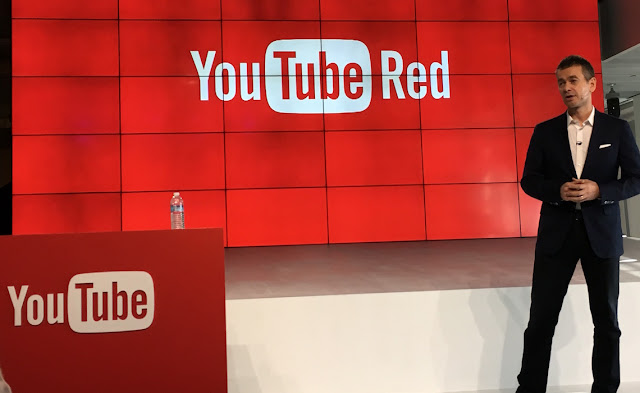 YouTube was founded by Chad Hurley, Steve Chen, and Jawed Karim, who were all early employees of PayPal.[7] Hurley had studied design at Indiana University of Pennsylvania, and Chen and Karim studied computer science together at the University of Illinois at Urbana-Champaign.[8] According to a story that has often been repeated in the media, Hurley and Chen developed the idea for YouTube during the early months of 2005, after they had experienced difficulty sharing videos that had been shot at a dinner party at Chen's apartment in San Francisco. Karim did not attend the party and denied that it had occurred, but Chen commented that the idea that YouTube was founded after a dinner party "was probably very strengthened by marketing ideas around creating a story that was very digestible".[9]
YouTube was founded by Chad Hurley, Steve Chen, and Jawed Karim, who were all early employees of PayPal.[7] Hurley had studied design at Indiana University of Pennsylvania, and Chen and Karim studied computer science together at the University of Illinois at Urbana-Champaign.[8] According to a story that has often been repeated in the media, Hurley and Chen developed the idea for YouTube during the early months of 2005, after they had experienced difficulty sharing videos that had been shot at a dinner party at Chen's apartment in San Francisco. Karim did not attend the party and denied that it had occurred, but Chen commented that the idea that YouTube was founded after a dinner party "was probably very strengthened by marketing ideas around creating a story that was very digestible".[9]
Karim said the inspiration for YouTube first came from Janet Jackson's role in the 2004 Super Bowl incident, when her breast was exposed during her performance, and later from the 2004 Indian Ocean tsunami. Karim could not easily find video clips of either event online, which led to the idea of a video sharing site.[10] Hurley and Chen said that the original idea for YouTube was a video version of an online dating service, and had been influenced by the website Hot or Not.[11][12]
YouTube began as a venture capital-funded technology startup, primarily from a $11.5 million investment by Sequoia Capital between November 2005 and April 2006.[13] YouTube's early headquarters were situated above a pizzeria and Japanese restaurant in San Mateo, California.[14] The domain name
www.youtube.com was activated on February 14, 2005, and the website was developed over the subsequent months.[15] The first YouTube video, titled Me at the zoo, shows co-founder Jawed Karim at the San Diego Zoo.[16] The video was uploaded on April 23, 2005, and can still be viewed on the site.[17] YouTube offered the public a beta test of the site in May 2005. The first video to reach one million views was aNike advertisement featuring Ronaldinho in September 2005. Following a $3.5 million investment from Sequoia Capital in November, the site launched officially on December 15, 2005, by which time the site was receiving 8 million views a day.[18][19]The site grew rapidly, and in July 2006 the company announced that more than 65,000 new videos were being uploaded every day, and that the site was receiving 100 million video views per day.[20] According to data published by market researchcompany comScore, YouTube is the dominant provider of online video in the United States, with a market share of around 43% and more than 14 billion views of videos in May 2010.[21]
In 2014 YouTube said that 300 hours of new videos were uploaded to the site every minute,[22] three times more than one year earlier[23] and that around three quarters of the material comes from outside the U.S.[24][25][26] The site has 800 million unique users a month.[27] It is estimated that in 2007 YouTube consumed as much bandwidth as the entire Internet in 2000.[28] According to third-party web analytics providers, Alexa and SimilarWeb, YouTube is the third most visited website in the world, as of June 2015; SimilarWeb also lists YouTube as the top TV and video website globally, attracting more than 15 billion visitors per month.[1][29][30]
The choice of the name
www.youtube.com led to problems for a similarly named website, www.utube.com. The site's owner, Universal Tube & Rollform Equipment, filed a lawsuit against YouTube in November 2006 after being regularly overloaded by people looking for YouTube. Universal Tube has since changed the name of its website to www.utubeonline.com.[31][32] In October 2006, Google Inc. announced that it had acquired YouTube for $1.65 billion in Google stock, and the deal was finalized on November 13, 2006.[33]
In March 2010, YouTube began free streaming of certain content, including 60 cricket matches of the Indian Premier League. According to YouTube, this was the first worldwide free online broadcast of a major sporting event.[34] On March 31, 2010, the YouTube website launched a new design, with the aim of simplifying the interface and increasing the time users spend on the site. Google product manager Shiva Rajaraman commented: "We really felt like we needed to step back and remove the clutter."[35] In May 2010, it was reported that YouTube was serving more than two billion videos a day, which it described as "nearly double the prime-time audience of all three major US television networks combined".[36] In May 2011, YouTube reported in its company blog that the site was receiving more than three billion views per day.[25] In January 2012, YouTube stated that the figure had increased to four billion videos streamed per day.[24]
In October 2010, Hurley announced that he would be stepping down as chief executive officer of YouTube to take an advisory role, and that Salar Kamangar would take over as head of the company.[37] In April 2011, James Zern, a YouTube software engineer, revealed that 30% of videos accounted for 99% of views on the site.[38] In November 2011, the Google+ social networking site was integrated directly with YouTube and the Chrome web browser, allowing YouTube videos to be viewed from within the Google+ interface.[39]
 In December 2011, YouTube launched a new version of the site interface, with the video channels displayed in a central column on the home page, similar to the news feeds of social networking sites.[40] At the same time, a new version of the YouTube logo was introduced with a darker shade of red, the first change in design since October 2006.[41] In May 2013, YouTube launched a pilot program to begin offering some content providers the ability to charge $0.99 per month or more for certain channels, but the vast majority of its videos would remain free to view.[42][43]
In December 2011, YouTube launched a new version of the site interface, with the video channels displayed in a central column on the home page, similar to the news feeds of social networking sites.[40] At the same time, a new version of the YouTube logo was introduced with a darker shade of red, the first change in design since October 2006.[41] In May 2013, YouTube launched a pilot program to begin offering some content providers the ability to charge $0.99 per month or more for certain channels, but the vast majority of its videos would remain free to view.[42][43]
In February 2015, YouTube announced the launch of a new app specifically for use by children visiting the site, called YouTube Kids. It allows parental controls and restrictions on who can upload content, and is available for both Android and iOS devices.[44] Later on August 26, 2015, YouTube Gaming was launched, a platform for video gaming enthusiasts intended to compete with Twitch.tv.[45] 2015 also saw the announcement of a premium YouTube service titled YouTube Red, which provides users with both ad-free content as well as the ability to download videos among other features.[46] On August 10, 2015, Google announced that it was creating a new company, Alphabet, to act as the holding company for Google, with the change in financial reporting to begin in the fourth quarter of 2015. YouTube remains as a subsidiary of Google.[47] In January 2016, YouTube expanded its headquarters in San Bruno by purchasing an office park for $215 million. The complex has 554,000 square feet of space and can house up to 2,800 employees.[48]
Playback
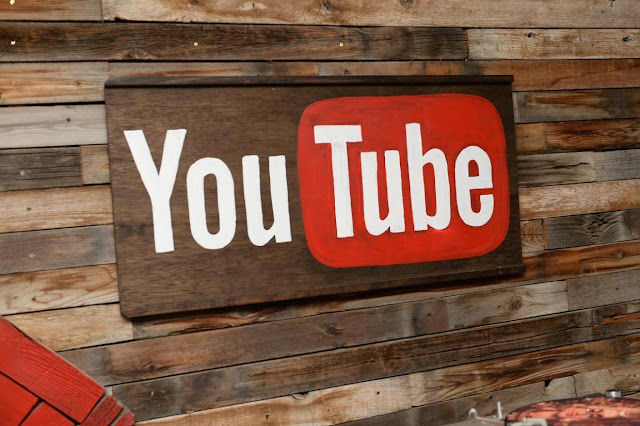 Previously, viewing YouTube videos on a personal computer required the Adobe Flash Player plug-in to be installed in the browser.[49] In January 2010, YouTube launched an experimental version of the site that used the built-in multimedia capabilities of web browsers supporting the HTML5 standard.[50] This allowed videos to be viewed without requiring Adobe Flash Player or any other plug-in to be installed.[51][52] The YouTube site had a page that allowed supported browsers to opt into the HTML5 trial. Only browsers that supported HTML5 Video using the H.264 or WebM formats could play the videos, and not all videos on the site were available.[53][54] On January 27, 2015, YouTube announced that HTML5 will be the default playback method on supported browsers. Supported browsers includeGoogle Chrome, Safari 8, and Internet Explorer 11.[55] YouTube experimented with Dynamic Adaptive Streaming over HTTP (MPEG-DASH), which is an adaptive bit-rate HTTP-based streaming solution optimizing the bitrate and quality for the available network.[56] Currently they are using Adobe Dynamic Streaming for Flash.[57]
Previously, viewing YouTube videos on a personal computer required the Adobe Flash Player plug-in to be installed in the browser.[49] In January 2010, YouTube launched an experimental version of the site that used the built-in multimedia capabilities of web browsers supporting the HTML5 standard.[50] This allowed videos to be viewed without requiring Adobe Flash Player or any other plug-in to be installed.[51][52] The YouTube site had a page that allowed supported browsers to opt into the HTML5 trial. Only browsers that supported HTML5 Video using the H.264 or WebM formats could play the videos, and not all videos on the site were available.[53][54] On January 27, 2015, YouTube announced that HTML5 will be the default playback method on supported browsers. Supported browsers includeGoogle Chrome, Safari 8, and Internet Explorer 11.[55] YouTube experimented with Dynamic Adaptive Streaming over HTTP (MPEG-DASH), which is an adaptive bit-rate HTTP-based streaming solution optimizing the bitrate and quality for the available network.[56] Currently they are using Adobe Dynamic Streaming for Flash.[57]Uploading
All YouTube users can upload videos up to 15 minutes each in duration. Users who have a good track record of complying with the site's Community Guidelines may be offered the ability to upload videos up to 12 hours in length, which requires verifying the account, normally through a mobile phone.[58] When YouTube was launched in 2005, it was possible to upload long videos, but a ten-minute limit was introduced in March 2006 after YouTube found that the majority of videos exceeding this length were unauthorized uploads of television shows and films.[59][60] The 10-minute limit was increased to 15 minutes in July 2010.[61] If an up-to-date browser version is used, videos greater than 20 GB can be uploaded.[62] Videos captions are made using speech recognition technology when uploaded. Such captioning is usually not perfectly accurate, so YouTube provides several options for manually entering in the captions themselves for greater accuracy.[63]
YouTube accepts videos uploaded in most container formats, including .AVI, .MKV, .MOV, .MP4, DivX, .FLV, and .ogg and .ogv. These include video formats such asMPEG-4, MPEG, VOB, and .WMV. It also supports 3GP, allowing videos to be uploaded from mobile phones.[64] Videos with progressive scanning or interlaced scanning can be uploaded, but for the best video quality, YouTube suggests interlaced videos be deinterlaced before uploading. All the video formats on YouTube use progressive scanning.[65]
Quality and formats
YouTube originally offered videos at only one quality level, displayed at a resolution of 320×240 pixels using the Sorenson Spark codec (a variant of H.263),[66][67]with mono MP3 audio.[68] In June 2007, YouTube added an option to watch videos in 3GP format on mobile phones.[69] In March 2008, a high-quality mode was added, which increased the resolution to 480×360 pixels.[70] In November 2008, 720p HD support was added. At the time of the 720p launch, the YouTube player was changed from a 4:3 aspect ratio to a widescreen 16:9.[71] With this new feature, YouTube began a switchover to H.264/MPEG-4 AVC as its default video compression format. In November 2009, 1080p HD support was added. In July 2010, YouTube announced that it had launched a range of videos in 4K format, which allows a resolution of up to 4096×3072 pixels.[72][73] In June 2015, support for 8K resolution was added, with the videos playing at 7680×4320 pixels.[74]
In June 2014, YouTube introduced videos playing at 60 frames per second, in order to reproduce video games with a frame rate comparable to high-end graphics cards.[75][76] The videos play back at a resolution of 720p or higher.[77] YouTube videos are available in a range of quality levels. The former names of standard quality (SQ), high quality (HQ) and high definition (HD) have been replaced by numerical values representing the vertical resolution of the video. The default video stream is encoded in the VP9 format with stereo Opus audio; if VP9/WebM is not supported in the browser/device or the browser's user agent reports Windows XP, then H.264/MPEG-4 AVC video with stereo AAC audio is used instead.[78]
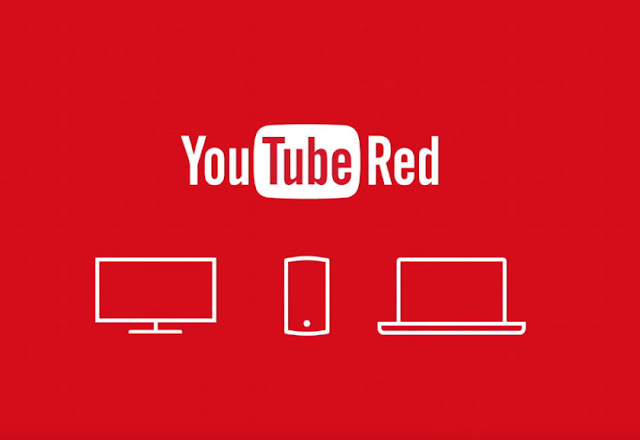 |
| https://www.youtube.com/channel/UCGxAZBrLEtEUxviIqnx1YHA |
The first Rewind was created by YouTube in 2010 and featured a Top 10 list of the most popular YouTube videos for that year. In 2011, YouTube had started to create and produce Rewind videos with the help of Seedwell, and Portal A Interactive.[3][7][10] From 2011 and on, the YouTube Rewind videos have only been uploaded to the YouTube Spotlightchannel, with additional "Behind-the-scenes" content.[10]
2010–2011[edit]
On 12–13 December 2010, the first YouTube Rewind was uploaded named "2010 YouTube Rewind: Year in Review" It featured the Top 10 most popular videos on YouTube for past year. It was uploaded on two channels: YouTube Trends on the first day,[2] and YouTube Spotlight on the second.[1]
On 20 December 2011, "YouTube Rewind 2011" was uploaded.[7][8] It was created and produced by YouTube and Portal A Intercreated,[7] and features Rebecca Black as the host. Her music video Friday had become a viral video in late 2010.[7][11] It featured another Top 10 most popular videos on YouTube for the year.[10]
2012 to present[edit]
In 2012, YouTube's Rewind videos changed from a Top 10 list, to featuring several popular YouTubers, the most popular music and videos into, mashup (music), and video's, breaking news and internet memes, from the year. In 2013 the Rewind Button/logo was created.[12]
On 17 December 2012, "2012 Rewind YouTube Style 2012" was uploaded to YouTube Spotlight.[13] It was created and produced by YouTube, and Seedwill.[3]
On the 11 December 2013, "YouTube Rewind: What Does 2013 Say?" was uploaded to YouTube Spotlight.[4] It was created and produced by YouTube, and Portal A Interactive.[4] It was the first year that the YouTube Rewind Button was used; otherwise, it was very similar in style to the 2012 video. Jordan Roseman aka DJ Earworm composed. He used, and mashed up, six songs from the year. Jimmy Fallon, and The Roots from The Tonight Show, had a guest appearance as well.[4]
On 9 December 2014,[5] "YouTube Rewind: Turn Down for 2014" was uploaded to YouTube Spotlight. It was again created and produced by YouTube, and Portal A Interactive. Over 10 songs were mashed together and composed by DJ Earworm[5][14] for the video.[5] It was not structured around songs, as in previous years. More internet memes and trends were used alongside the music. Its main features were the YouTube Rewind Button flag. With YouTuber's and characters running with it, it starts at the beginning of the video all the way to the end. The flag was run through the sets of Colbert Report by Big Bird, Conan by Conan O'Brien; running through his own with Freddy Wong acting as the host, and the set of Last Week Tonight with John Oliver, by Kid President. The actual Rewind Button is not shown until the end of the video.[14]
On 9 December 2015,[6] "YouTube Rewind: Now Watch Me 2015 | #YouTubeRewind" was uploaded to the YouTube Spotlight channel. It was again created and produced by YouTube, and Portal A Interactive. It was the first one to have a hashtag along with it.[6][10] April 23, 2015 was YouTube's 10th anniversary of hosting videos on the internet.[15] The video heavily incorporated the past 10 years of YouTube into the video. The music mashup was composed by The Hood Internet. Additionally, Avicii composed an original remix for the video.[6][10]
The video features more gamers than previous years, such as YouTube personality Markiplier. It was set up to resemble the Five Nights at Freddy's, an indie,survival horror, point-and-click, video game that has gained recognition since its first release in August 2014. The Rewind Button and logo are shown throughout the video. Its main appearance is with Felix Kjellberg and Zoe Sugg about halfway through the video. They are next to a scoreboard with two dates of 9 December 2015. Zoe changes one scoreboard date back to 14 February 2005, leaving the other at 9 December 2015. Afterwards Felix "brofists" the rewind button, triggering the video to show viral videos and memes from 2015 back to 2005. After the credits, the Fine Brothers are shown arguing about whether PewDiePie was in the video.[10]
Series videos
History[edit]
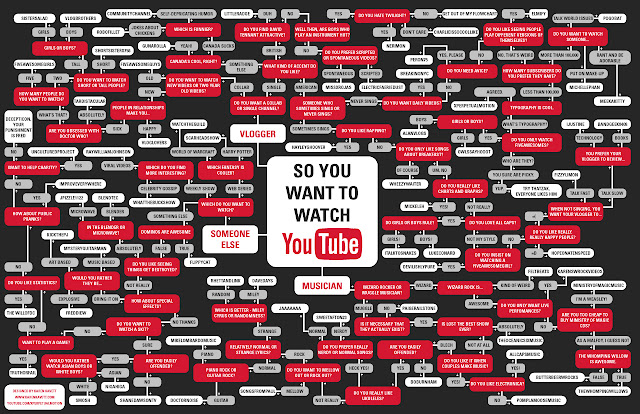 The service was first unveiled in November 2014 as Music Key, serving as a collaboration between YouTube and Google Play Music, and meant to succeed the former's own subscription service. Music Key offered ad-free playback of music videos from participating labels hosted on YouTube, as well as background and offline playback of music videos on mobile devices from within the YouTube app. The service also included access to Google Play Music All Access, which provides ad-free audio streaming of a library of music.[8] Alongside Music Key, Google also introduced tighter integration between Play Music and YouTube's apps, including the sharing of music recommendations, and access to YouTube's music videos from within the Play Music app.[4][5] Music Key was not YouTube's first foray into premium content, having launched film rentals in 2010,[9] and premium, subscription-based channels in 2013.[10]
The service was first unveiled in November 2014 as Music Key, serving as a collaboration between YouTube and Google Play Music, and meant to succeed the former's own subscription service. Music Key offered ad-free playback of music videos from participating labels hosted on YouTube, as well as background and offline playback of music videos on mobile devices from within the YouTube app. The service also included access to Google Play Music All Access, which provides ad-free audio streaming of a library of music.[8] Alongside Music Key, Google also introduced tighter integration between Play Music and YouTube's apps, including the sharing of music recommendations, and access to YouTube's music videos from within the Play Music app.[4][5] Music Key was not YouTube's first foray into premium content, having launched film rentals in 2010,[9] and premium, subscription-based channels in 2013.[10]
During its invite-only beta, Music Key faced mixed reception due to the limited scope of the offering; YouTube's chief business officer Robert Kyncl explained that his daughter was confused over why videos of songs from Frozen were not "music" in the scope of the service, and thus not ad-free.[6] These concerns and others led to a revamping of the Music Key concept to create YouTube Red; unlike Music Key, YouTube Red was designed to provide ad-free streaming to all videos, rather than just music content. This shift required YouTube to seek permission from its content creators and rights holders to allow their content to be part of the ad-free service; under the new contract terms, partners would receive a share of the total revenue from YouTube Red subscriptions, as determined by how much their content is viewed by subscribers.[6]
YouTube also sought to compete against sites such as Hulu and Netflix by offering original content as part of the subscription service, leveraging prominent YouTube personalities in combination with professional producers. Robert Kyncl acknowledged that while many of YouTube's prominent personalities had built their followings and created content while operating on a "shoestring budget", he admitted that "in order to scale up, it takes a different kind of enterprise, a different kind of skill set; there is [a] story-telling skill set, there is showrunning, etc."[6][11]
On October 21, 2015, it was announced that the service would be re-launched in a revised form as YouTube Red on October 28, 2015, expanding its scope to offer ad-free access to all YouTube videos, as opposed to just music, as well as premium content produced in collaboration with notable YouTube producers and personalities.[6] Prominent YouTube personality PewDiePie, who is involved in one of the planned originals for the service,[11] explained that the service was meant to mitigate profits lost due to the use of ad blocking.[12]
On May 18, 2016, YouTube Red was launched in Australia and New Zealand, the first countries to gain access to the service outside the United States. The YouTube Music app was also launched in the territories the same day.[13][14]
On August 3, 2016, YouTube Red support was added to the YouTube Kids app.[15]
Features[edit]
A YouTube Red subscription allows users to watch videos on YouTube without advertisements across the website and its mobile apps, including the dedicated YouTube Music, YouTube Gaming, and YouTube Kids apps. Through the apps, users can also save videos to their device for offline viewing, and play them in the background.[4][5] YouTube Red will also offer original, premium content exclusive to subscribers, the content will be created and published by YouTube's largest channels and creators.[16] The service also offers ad-free music streaming through the Google Play Music All Access service.[6]
Content[edit]
| This article needs to be updated. (July 2013) |
| YouTube Awards (2006-2007) | |
|---|---|
| Awarded for | Best YouTube Videos |
| Country | United States |
| Presented by | YouTube (2006-2007) |
| First awarded | March 18, 2007 |
The YouTube Awards or YouTube Video Awards were awards given out as formalized recognition of the bestYouTube videos of the preceding year, such as favorite music or comedy genres, as voted by the YouTube community. The awards were organized in 2007 to "call out some of the most popular videos and let the users choose which ones deserve some additional recognition".[1] The awards are the first time that videos would receive any formal recognition; previously, high-ranking videos were only recognized by dynamic lists of most-viewed videos.[1] The winners received atrophy, which was a stand with a large glass "play" button.[2] In addition, they received an invitation to an event to occur "later this year".[3] YouTube does Awards every year, but does not always do a formalized recognition.
Organization[edit]
The videos to vote upon are chosen by YouTube staff, while the winners are selected by YouTubers.[1] The Awards were first given in 2007—called the 2006 Awards—for the best videos of 2006. The awards were in seven categories: Adorable, Comedy, Commentary, Creative, Inspirational, Musician of the Year and Series.[1] Each category then comprised 10 videos which YouTubers ranked in order of preference.[4] For the 2007 Awards, five new categories were added: Eyewitness, Instructional, Short Film, Sports and Political; a general "Music" category replaced the "Musician of the Year" category of the previous year. In addition, each category held only six videos for which YouTubers could vote.[5]
2007 Awards[edit]
Voting for the 2006 Awards took place from March 18, 2007 to March 23, 2007. Duke Righteous and Alex Chudnovsky were both nominated in the "Music Video of the Year" category.[1] The 2007 YouTube Awards came just a week after Viacom sued YouTube's parent company, Google, for more than $1 billion for copyright infringement of television shows owned by Viacom.[6]
The Awards received criticism from New York Times writer Virginia Heffernan when first organized. She suggested that the Awards created too much of a formalized process on YouTube. YouTube, she argued, should not be about awards and individual recognition of merit. Rather, it should be a free place where one can post videos and express oneself free of judgment on quality.[7] Caroline McCarthy of CNET News commented on the 2007 awards in agreement with Heffernan: she argued that YouTube "is a cultural hub rather than strictly a creative outpost."[3] She also commented many of the most popular videos are not high quality, or original content.[3]
Nominations for the 2007 Awards included noted YouTubers Peter Oakley (geriatric1927), lonelygirl15, Renetto and Chad Vader.
| Category | Winning Video[4][7][8][9] | YouTube Link | YouTube User |
|---|---|---|---|
| Adorable | Kiwi! | Video | Madyeti47 |
| Comedy | Smosh Short 2: Stranded | Video | smosh |
| Commentary | Hotness Prevails/Worst Video Ever | Video | TheWineKone |
| Creative | Here It Goes Again | Video | OkGo |
| Inspirational | Free Hugs Campaign | Video | PeaceOnEarth123 |
| Musician of the Year | Say It's Possible | Video | terranaomi |
| Series | Ask A Ninja | Part 1 video | digitalfilmmaker |
| Category | Nominated Videos | YouTube Link | YouTube User |
|---|---|---|---|
| Inspirational | Free Hugs Campaign | Video | PeaceOnEarth123 |
| Inspirational | Heather Martin - When Are You Coming Home | Video | Bye2Love |
| Inspirational | 9 months of gestation in 20 seconds - New Version! | Video | Matt Pressnall |
| Inspirational | Good bye Martin | Video | MHarris1920 |
| Inspirational | Love Letters - An Animated Proposal - v2.0 | Video | worldofjeff |
| Inspirational | A Girl Like Me | Video | bfnmusic |
| Inspirational | Why Walk 1000 Miles?(original edit) | Video | taragolden |
| Inspirational | We Are All The Same | Video | bbenefiel |
| Inspirational | Heaven | Video | tobeornot2b |
| Inspirational | What are You thankful for? | Video | nyOPERAguy |
2008 Awards[edit]
The 2008 Awards began on March 13, 2008 and lasted for 5 days, until March 18. YouTubers could vote once per day, but they couldn't change their vote once they voted.[11]
A notable entry in the 2008 Awards was a video of the University of Florida Taser incident, uploaded by The Gainesville Sun; it was entered in the new Eyewitness category.[12] One nomination in the Politics category was an interview with a candidate for the Republican Presidential nomination for the 2008 American presidential election, Ron Paul.[13] Also included in the Politics section was the I Got a Crush... on Obama video. Nominated in the Inspirational category was a stop motion video by Trevor Dougherty, entitled "Stand Up for World Peace."[14][15] The Leave Britney Alone! video by vlogger Chris Crocker was nominated in the Commentary category. The song "Chocolate Rain" by Tay Zonday was nominated in the Music section;[2] it won (the favorite, Mia Rose, lost by a very short margin).[16]
User comments
Most videos enable users to leave comments, and these have attracted attention for the negative aspects of both their form and content. In 2006, Time praised Web 2.0 for enabling "community and collaboration on a scale never seen before", and added that YouTube "harnesses the stupidity of crowds as well as its wisdom. Some of the comments on YouTube make you weep for the future of humanity just for the spelling alone, never mind the obscenity and the naked hatred".[272] The Guardian in 2009 described users' comments on YouTube as:
| “ | Juvenile, aggressive, misspelled, sexist, homophobic, swinging from raging at the contents of a video to providing a pointlessly detailed description followed by a LOL, YouTube comments are a hotbed of infantile debate and unashamed ignorance – with the occasional burst of wit shining through.[273] | ” |
In September 2008, The Daily Telegraph commented that YouTube was "notorious" for "some of the most confrontational and ill-formed comment exchanges on the internet", and reported on YouTube Comment Snob, "a new piece of software that blocks rude and illiterate posts".[274] The Huffington Post noted in April 2012 that finding comments on YouTube that appear "offensive, stupid and crass" to the "vast majority" of the people is hardly difficult.[275]
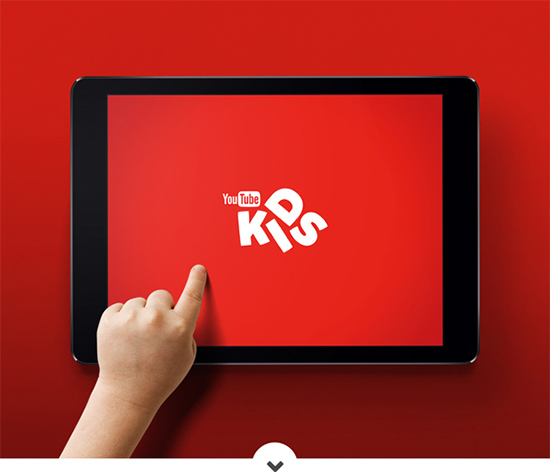
On November 6, 2013, Google implemented a comment system oriented on Google+ that required all YouTube users to use a Google+ account in order to comment on videos. The stated motivation for the change was giving creators more power to moderate and block comments, thereby addressing frequent criticisms of their quality and tone.[276] The new system restored the ability to include URLs in comments, which had previously been removed due to problems with abuse.[277][278] In response, YouTube co-founder Jawed Karim posted the question "why the fuck do I need a google+ account to comment on a video?" on his YouTube channel to express his negative opinion of the change.[279] The official YouTube announcement[280] received 20,097 "thumbs down" votes and generated more than 32,000 comments in two days.[281] Writing in the Newsday blog Silicon Island, Chase Melvin noted that "Google+ is nowhere near as popular a social media network as Facebook, but it's essentially being forced upon millions of YouTube users who don't want to lose their ability to comment on videos" and "Discussion forums across the Internet are already bursting with outcry against the new comment system". In the same article Melvin goes on to say:[282]
| “ | Perhaps user complaints are justified, but the idea of revamping the old system isn't so bad.
Think of the crude, misogynistic and racially-charged mudslinging that has transpired over the last eight years on YouTube without any discernible moderation. Isn't any attempt to curb unidentified libelers worth a shot? The system is far from perfect, but Google should be lauded for trying to alleviate some of the damage caused by irate YouTubers hiding behind animosity and anonymity.
| ” |
On July 27, 2015, Google announced in a blog post that it would be removing the requirement to sign up to a Google+ account to post comments to YouTube.[283]
On November 3, 2016, YouTube announced a trial scheme which allows the creators of videos to decide whether to approve, hide or report the comments posted on videos based on an algorithm that detects potentially offensive comments.[284]
View counts
In December 2012, two billion views were removed from the view counts of Universal and Sony music videos on YouTube, prompting a claim by The Daily Dot that the views had been deleted due to a violation of the site's terms of service, which ban the use of automated processes to inflate view counts. This was disputed byBillboard, which said that the two billion views had been moved to Vevo, since the videos were no longer active on YouTube.[285][286] On August 5, 2015, YouTube removed the feature which caused a video's view count to freeze at "301" (later "301+") until the actual count was verified to prevent view count fraud.[287] YouTube view counts now update in real time.[288]
Main article: Censorship of YouTube
As of September 2012, countries with standing national bans on YouTube include China, Iran, and Turkmenistan.
YouTube is blocked for a variety of reasons, including:[289]
- limiting public exposure to content that may ignite social or political unrest;
- preventing criticism of a ruler, government, government officials, religion, or religious leaders;
- violations of national laws, including:
- copyright and intellectual property protection laws;
- violations of hate speech, ethics, or morality-based laws; and
- national security legislation.
- preventing access to videos judged to be inappropriate for youth;
- reducing distractions at work or school; and
- reducing the amount of network bandwidth used.
In some countries, YouTube is completely blocked, either through a long term standing ban or for more limited periods of time such as during periods of unrest, the run-up to an election, or in response to upcoming political anniversaries. In other countries access to the website as a whole remains open, but access to specific videos is blocked. In cases where the entire site is banned due to one particular video, YouTube will often agree to remove or limit access to that video in order to restore service.[289]
Businesses, schools, government agencies, and other private institutions often block social media sites, including YouTube, due to bandwidth limitations and the site's potential for distraction.[289]
Several countries have blocked access to YouTube:
- Iran temporarily blocked access on December 3, 2006, to YouTube and several other sites, after declaring them as violating social and moral codes of conduct. The YouTube block came after a video was posted online that appeared to show an Iranian soap opera star having sex.[290] The block was later lifted and then reinstated after Iran's 2009 presidential election.[291] In 2012, Iran reblocked access, along with access to Google, after the controversial film Innocence of Muslims' trailer was released on YouTube.[292]
- Thailand blocked access between 2006 and 2007 due to offensive videos relating to King Bhumibol Adulyadej.[293][294]
- Some Australian state education departments block YouTube citing "an inability to determine what sort of video material might be accessed" and "There's no educational value to it and the content of the material on the site."[295]
- China blocked access from October 15, 2007 to March 22, 2008, and again starting on March 24, 2009. Access remains blocked.[296][297][298][299]
- Morocco blocked access in May 2007, possibly as a result of videos critical of Morocco's actions in Western Sahara.[300] YouTube became accessible again on May 30, 2007, after Maroc Telecom unofficially announced that the denied access to the website was a mere "technical glitch".[301]
- Turkey blocked access between 2008 and 2010 after controversy over videos deemed insulting to Mustafa Kemal Atatürk.[302][303][304] In November 2010, a video of the Turkish politician Deniz Baykal caused the site to be blocked again briefly, and the site was threatened with a new shutdown if it did not remove the video.[305] During the two and a half year block of YouTube, the video-sharing website remained the eighth most-accessed site in Turkey.[306][307] In 2014, Turkey blocked the access for the second time, after "a high-level intelligence leak."[308][309][310]
- Pakistan blocked access on February 23, 2008, because of "offensive material" towards the Islamic faith, including display of the Danish cartoons ofMuhammad.[311] This led to a near global blackout of the YouTube site for around two hours, as the Pakistani block was inadvertently transferred to other countries. On February 26, 2008, the ban was lifted after the website had removed the objectionable content from its servers at the request of the government.[312][313] Many Pakistanis circumvented the three-day block by using virtual private network software.[314] In May 2010, following the Everybody Draw Mohammed Day, Pakistan again blocked access to YouTube, citing "growing sacrilegious content".[315] The ban was lifted on May 27, 2010, after the website removed the objectionable content from its servers at the request of the government. However, individual videos deemed offensive to Muslims posted on YouTube will continue to be blocked.[316][317] Pakistan again placed a ban on YouTube in September 2012, after the site refused to remove the film Innocence of Muslims, with the ban still in operation as of September 2013.[318] The ban was lifted in January 2016 after YouTube launched a Pakistan-specific version.[319]
- Turkmenistan blocked access on December 25, 2009, for unknown reasons. Other websites, such as LiveJournal were also blocked.[320]
- Libya blocked access on January 24, 2010, because of videos that featured demonstrations in the city of Benghazi by families of detainees who were killed in Abu Salim prison in 1996, and videos of family members of Libyan leader Muammar Gaddafi at parties. The blocking was criticized by Human Rights Watch.[321] In November 2011, after the Libyan Civil War, YouTube was once again allowed in Libya.[322]
- Afghanistan, Bangladesh, Russia, and Sudan blocked access in September 2012 following controversy over a 14-minute trailer for the film Innocence of Muslimswhich had been posted on the site.[323][324][325][326][327][328]
- In Libya and Egypt, the Innocence of Muslims trailer was blamed for violent protests in September 2012. YouTube stated that "This video—which is widely available on the Web—is clearly within our guidelines and so will stay on YouTube. However, given the very difficult situation in Libya and Egypt we have temporarily restricted access in both countries."[329][330]
Music Key licensing
In May 2014, prior to the launch of YouTube's subscription-based Music Key service, the independent music trade organization Worldwide Independent Network alleged that YouTube was using non-negotiable contracts with independent labels that were "undervalued" in comparison to other streaming services, and that YouTube would block all music content from labels who do not reach a deal to be included on the paid service. In a statement to the Financial Times in June 2014, Robert Kyncl confirmed that YouTube would block the content of labels who do not negotiate deals to be included in the paid service "to ensure that all content on the platform is governed by its new contractual terms." Stating that 90% of labels had reached deals, he went on to say that "while we wish that we had [a] 100% success rate, we understand that is not likely an achievable goal and therefore it is our responsibility to our users and the industry to launch the enhanced music experience."[331][332][333][334] The Financial Times later reported that YouTube had reached an aggregate deal with Merlin Network—a trade group representing over 20,000 independent labels, for their inclusion in the service. However, YouTube itself has not confirmed the deal.[176]
April Fools
YouTube has featured an April Fools prank on the site on April 1 of every year since 2008. In 2008, all the links to the videos on the main page were redirected toRick Astley's music video "Never Gonna Give You Up", a prank known as "Rickrolling".[335][336] In 2009, when clicking on a video on the main page, the whole page turned upside down. YouTube claimed that this was a "new layout".[337] In 2010, YouTube temporarily released a "TEXTp" mode, which translated the colors in the videos to random upper case letters. YouTube claimed in a message that this was done in order to reduce bandwidth costs by $1 per second.[338] In 2011, the site celebrated its "100th anniversary" with a "1911 button" and a range of sepia-toned silent, early 1900s-style films, including "Flugelhorn Feline", a parody of Keyboard Cat.[339] In 2012, clicking on the image of a DVD next to the site logo led to a video about "The YouTube Collection", a purported option to order every YouTube video for home delivery on DVD, videocassette, Laserdisc, or Betamax tapes. The spoof promotional video touted "the complete YouTube experience completely offline."[340] In 2013, YouTube teamed up with satirical newspaper company The Onion to claim that the video sharing website was launched as a contest which had finally come to an end, and would announce a winner of the contest when the site went back up in 2023. A video of two presenters announcing the nominees streamed live for twelve hours.[341] In 2014, YouTube announced that it was responsible for the creation of all viral video trends, and revealed previews of upcoming memes, such as "Clocking", "Kissing Dad", and "Glub Glub Water Dance".[342] In 2015, YouTube added a music button to the video bar that played samples from "Sandstorm" by Darude. Additionally, when users searched for a song title, a message would appear saying "Did you mean: Darude – Sandstorm by Darude".[343] In 2016, YouTube announced "SnoopaVision Beta", telling their users that soon they would have the option to watch every video on the platform in 360 degree mode with Snoop Dogg.[344]
See also
This audio file was created from a revision of the "YouTube" article dated 2011-03-26, and does not reflect subsequent edits to the article. (Audio help)
- CNN-YouTube presidential debates
- List of most viewed YouTube videos
- List of YouTubers
- Ouellette v. Viacom International Inc.
- Reply Girls
- YouTube Awards
- YouTube Instant
- YouTube Live
- YouTube Multi Channel Network
- YouTube Symphony Orchestra
- Viacom International Inc. v. YouTube, Inc.
General:
- Alternative media
- Comparison of video hosting services
- List of Internet phenomena
- List of video hosting services
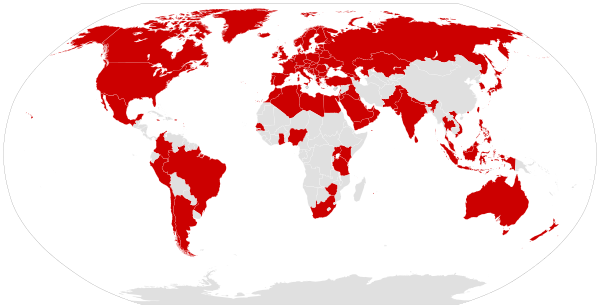


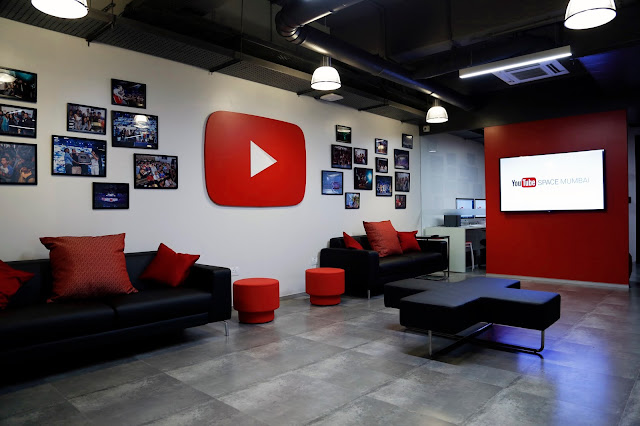


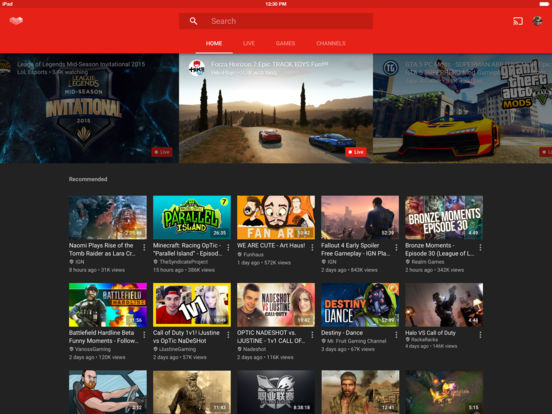


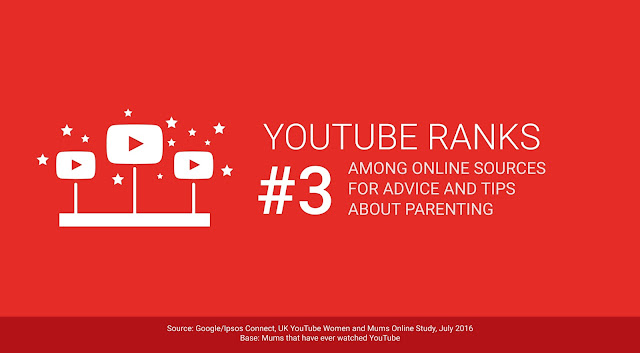
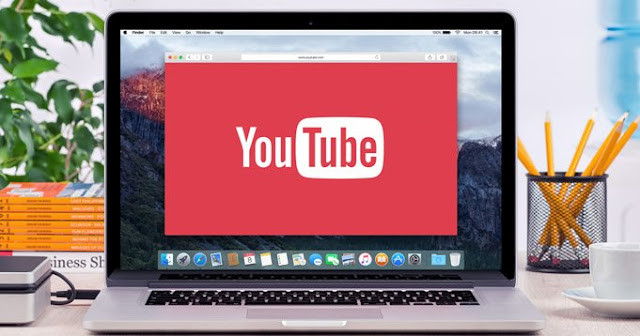


No comments:
Post a Comment